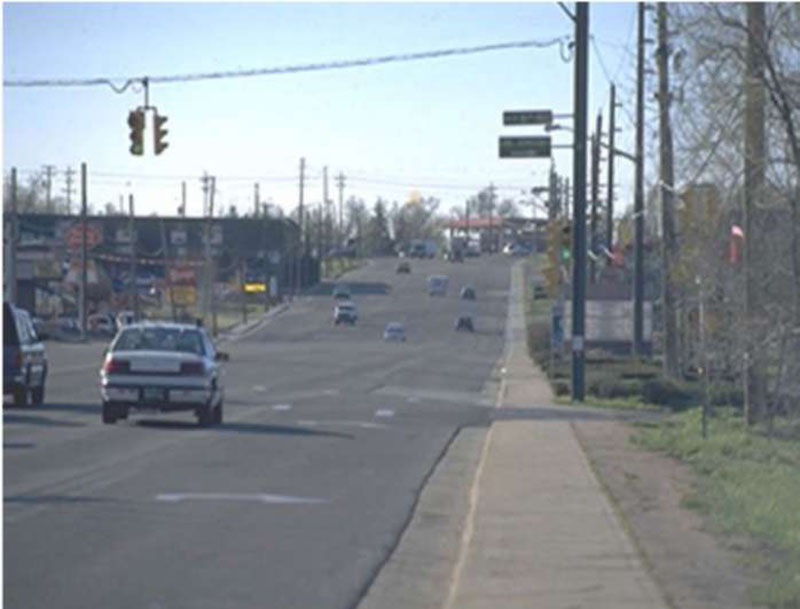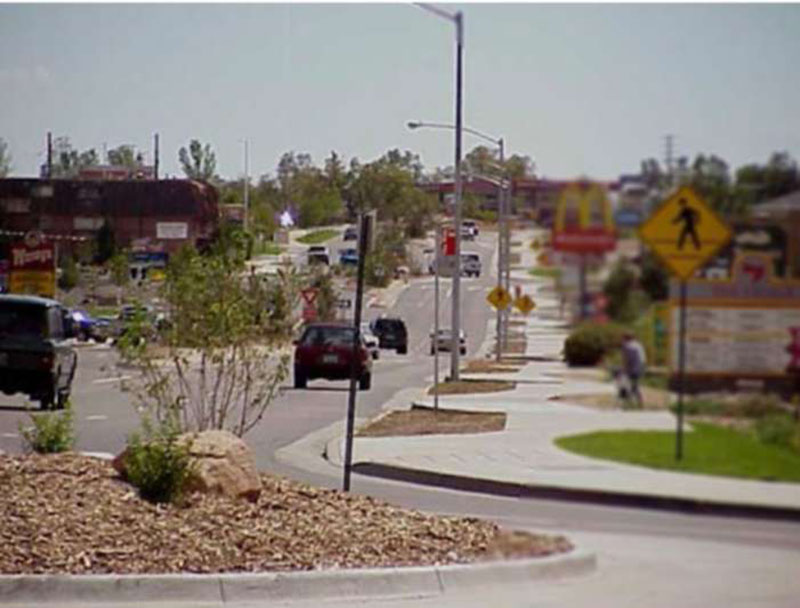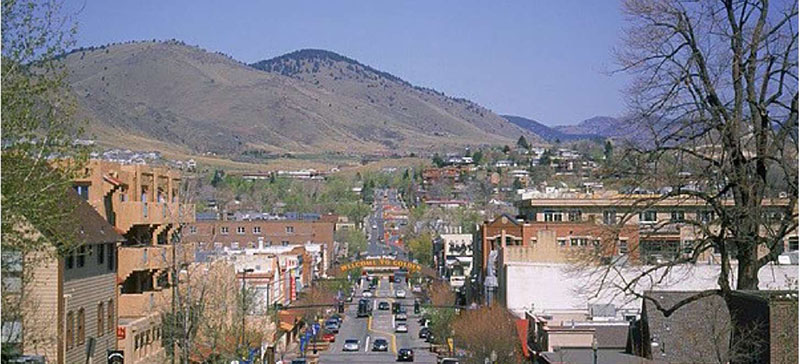U.S. Department of Transportation
Federal Highway Administration
1200 New Jersey Avenue, SE
Washington, DC 20590
202-366-4000
| ISSUE | STRATEGIES | TAKEAWAYS |
|---|---|---|
|
|
|
A self-enforcing road is a roadway that is planned and designed to encourage drivers to select operating speeds in harmony with the posted speed limit. Properly designed self-enforcing roadways can be effective in producing speed compliance and may contribute to less severe crash outcomes1.
The City of Golden, Colorado is located west of Denver at the base of the Rocky Mountains. It is both a residential community as well as home to the Coors Brewery and Colorado School of Mines. South Golden Road is one of the major arterials in town with a long-standing history of being a major thoroughfare2.
In 1999, plans for a new shopping center along South Golden Road elevated citizens' concerns about traffic speeds as well as pedestrian and bicycle safety along the corridor (see South Golden Road photo).
In response, the city rebuilt South Golden Road using design elements to address speeding, access, and overall safety. The self-enforcing design replaced traffic signals with roundabouts and addressed vulnerable road user safety3.

South Golden Road before improvements. Source: Dan Hartman, City of Golden, CO.

South Golden Road after improvements. Source: Dan Hartman, City of Golden, CO.

Golden, Colorado. Source: Getty Images
Prior to improvement – South Golden Road was a very wide (80 foot) street to cross and consisted of four through lanes plus a center turn lane. The corridor was capable of handling the 20,000 vehicles per day, however, the frequent points of access from business and side streets created operational and safety issues. The half-mile section of South Golden Road included two signalized intersections at Johnson Road and Ulysses Street and two stop-controlled intersections at Lunnonhaus Drive and Utah Street. The corridor was experiencing a number of issues including speeding between intersections, traffic conflicts at intersections for vehicles, pedestrians, and bicycles, and significant delays especially at Utah Street. Prior to improvement, the posted speed limit was 35 mph and the measured 85th percentile speed was 48 mph. The corridor experienced an average of four crashes per month with at least one of these involving an injury3.
Community Input – The city initiated a study that included community input to identify the most viable alternatives for improvement. The study established the following goals for South Golden Road:
Design Process – The city considered a range of improvement options, researched roundabout design opportunities, and then gained feedback from the community through public meetings, discussions with businesses, and at public hearings with City Council. The resulting two design options were the following:
The city's efforts led to the ultimate choice for Option 2 (roundabouts) where the design supports speed compliance even with a 25 mph speed limit in addition to enhancing access, operations, and safety for all users. The roundabouts were constructed in 1998 – 1999 and were fully operational in late 1999 (see South Golden Road after improvements photo).
Once constructed, the city was pleased to report that the new design was in fact supporting speed compliance as well as safety as noted by several metrics.
The City of Golden established corridor goals that resulted in eliminating a very wide, high-speed roadway that was experiencing safety and mobility issues. Instead of adding more traffic signals and stepping up police enforcement due to increasing vehicle speeds, they chose a roadway redesign including roundabouts and medians which was found to not only improve both operations and safety but to also provide a showcase community space which is aesthetically pleasing and has continued to accommodate all users in terms of traffic growth and safety.
| <Previous | Table of Contents | Next > |
